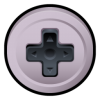About This File
Dolphin is a Gamecube and Wii emulator. Most games run perfectly or with minor bugs. Games are playable at HD quality, with 1080p and more. This is a remarkable feature the actual Gamecube and Wii consoles are not capable of. As an open source project everyone can commit improvements. The code is hosted on code.google.com. Dolphin is actively developed and almost every day new features are added and bugs fixed as well. Dolphin is a multiplatform project and many operating systems are supported. Dolphin runs on Windows 7 (x86 and x64), Mac OSX andLinux.
What's New in Version 4.0 See changelog
Released
- Beta support for the Wii official online multiplayer
- This is a feature that has been coming for a long time. More than two years ago, Matthew Parlane and Shawn Hoffman started working on emulating the Wii Wi-Fi networking API in order to run Wii online multiplayer games inside Dolphin. While it was not an easy change in itself, it also required a lot of modifications to core components of the emulator to be implemented properly (for example asynchronous IPC HLE) and a lot of debugging. It is now working well enough that we are releasing it to the public as a beta: don't expect everything to work, but popular games like Mario Kart Wii or Super Smash Bros Brawl can be played online right now.
- Alpha support for ARM/Android
- About two years ago, Ryan Houdek began the implementation of an ARM port of Dolphin, designed to run on powerful mobile phones and other ARM devices in the future. After a long time spent making Dolphin work well on both ARM and x86, Dolphin can now emulate GameCube and Wii games on recent Android phones. This support is still in early alpha stages: crashes happen, it's slow on Qualcomm hardware because of graphics drivers issues, and it is still missing a ton of features. Nowadays, Dolphin on Android is a two man project: Mathew Maidment is helping Ryan with the UI and making the Android version actually usable.
- Global User directory on Windows (Documentation)
- This is not exactly a major feature, but it is a big change in how Dolphin works on Windows, and requires user interaction to move from the old configuration system to the new one. Before 4.0, Dolphin configuration was stored next to Dolphin.exe, often causing issues when upgrading to a new version of Dolphin. New versions of Dolphin use a centralized location to store the configuration for all builds, usually My Documents\Dolphin Emulator. The documentation article linked above explains the details of this move, as well as what you need to do to migrate your old configuration to the new system (if you were using Dolphin before).
- New AX DSP HLE emulation code
- DSP HLE is the main audio emulation technique used in Dolphin. Before 4.0, it was extremely inaccurate and full of bugs, mostly due to how it was implemented. Dolphin 4.0 introduces a full rewrite of the audio emulation used in 99% of games, fixing hundreds of audio related bugs in Dolphin. On the flip side, it is now required to run a game at full speed to get full speed audio out of it, which is a direct consequence of fixing these bugs.
- A lot of more minor changes were also integrated in that new Dolphin release:
- New look
- A new look has been designed by MaJoR for Dolphin (new icon, new icon theme) and implemented on a new version of the Dolphin website by Pierre Bourdon.
- Wii Balance Board and GC Steering Wheel support
- Support for these two devices was added respectively by Matthew Parlane and skidau. The Wii Balance Board is not emulated and requires the real device to be used.
- Wii Remote support improvements
- Wii Remote background scanning was implemented to more closely match how a real Wii detects remotes, and support for -TR (Wii Motion Plus Inside) remotes was implemented for Mac OS X. A new documentation guide about Wii Remotes on Dolphin was also written by MaJoR to help Windows users with Wiimote issues.
- Fastmem support for Linux and OS X
- Fastmem is an optimization for Dolphin's CPU emulation, which was previously only implemented on Windows. Adding Fastmem support on Linux and OS X boosted the performance by 15 to 20% on these platforms.
- New OpenAL audio backend
- This audio backend, written by skidau, supports three important features that are not implemented in other backends yet: configurable audio latency, surround sound using the information contained in the Dolby Pro Logic II encoding used by most GameCube and Wii games, and support for sound stretching to make audio slow down when a game does not run at full speed.
- OpenGL video backend rewrite
- The Dolphin OpenGL video backend was rewritten by Markus Wick in order to use newer features of OpenGL and be GLES3 compatible. As a result, the OpenGL backend is now the fastest Dolphin video backend on NVIDIA cards.
- NetPlay stability and usability improvements
- Before Dolphin 4.0, GameCube NetPlay was at best a curiosity. 4.0 added a lot of NetPlay related changes which makes it actually usable for most games, but sometimes with performance issues. Super Smash Bros Melee players are now using Dolphin for regular online NetPlay tournaments, and it just works. Read the official NetPlay guide for more information.
- Mac OS X support enhancements
- This release also adds a few small OS X improvements: the Dolphin DMG bundles are now signed by a valid developer ID and do not require you to disable Gatekeeper to be used. The emulator is also Retina Display aware and handles the logical scaling better on these screens.
- Icon themes support
- In addition to shipping with a new default icon theme, Dolphin now allows you to make your own themes and share them with other people.
 With version 4.0:
With version 4.0:- Download


